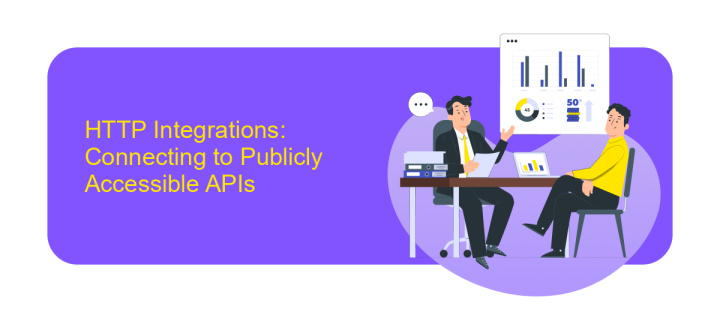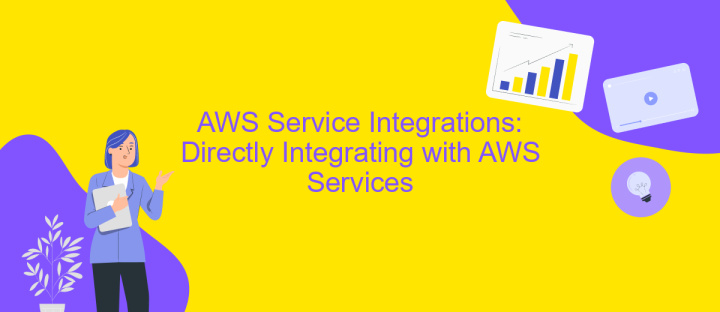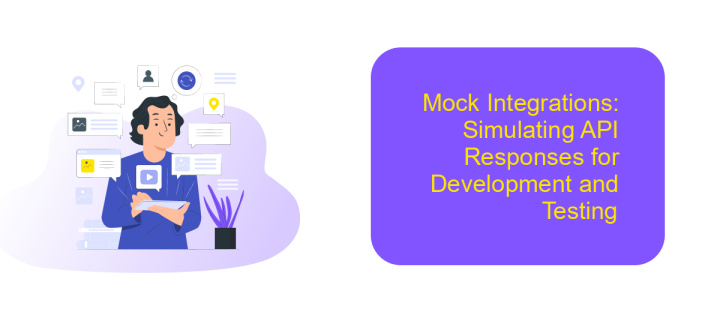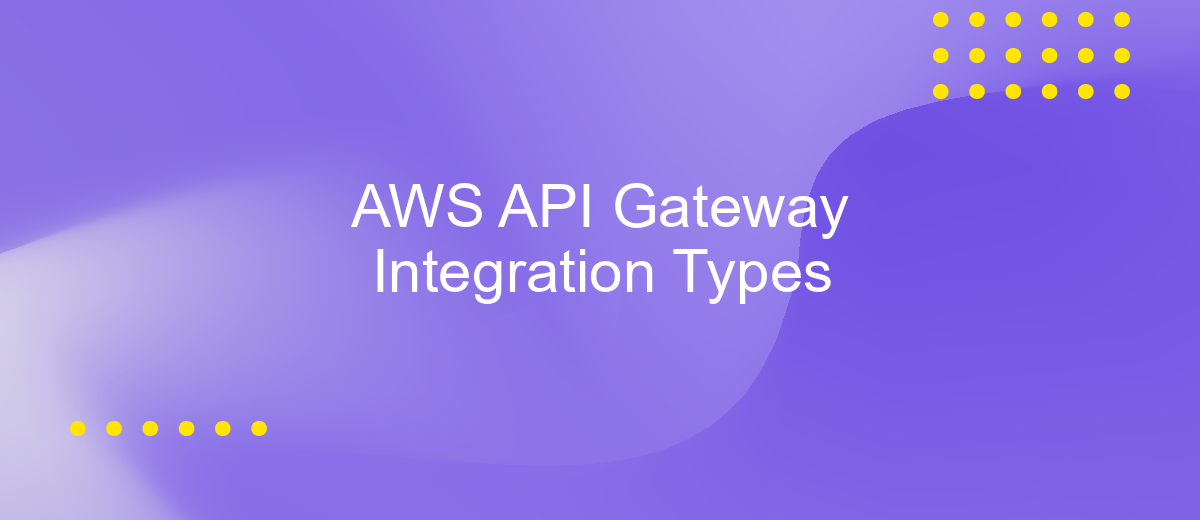AWS API Gateway Integration Types
AWS API Gateway is a powerful service that enables developers to create, publish, maintain, monitor, and secure APIs at any scale. One of its key features is the variety of integration types it offers, allowing seamless connectivity between client applications and backend services. This article explores the different integration types available in AWS API Gateway, highlighting their unique capabilities and use cases to help you choose the best fit for your application needs.
Introduction to AWS API Gateway and Integration Types
AWS API Gateway is a powerful service provided by Amazon Web Services that allows developers to create, publish, maintain, monitor, and secure APIs at any scale. It acts as a "front door" for applications to access data, business logic, or functionality from your backend services. API Gateway can handle thousands of concurrent API calls, enabling seamless integration with AWS services and external endpoints.
- HTTP/HTTPS Proxy Integration: Directly forward requests to backend HTTP endpoints.
- AWS Service Integration: Connects APIs to AWS services like Lambda, DynamoDB, and S3.
- Mock Integration: Simulates API responses without calling backend services.
- VPC Link Integration: Securely connects APIs to resources within a VPC.
- WebSocket Integration: Supports real-time, two-way communication between client and server.
Choosing the right integration type is crucial for optimizing performance and cost-effectiveness. Each integration type offers unique capabilities, allowing developers to tailor their API Gateway setup to specific use cases. Whether you're looking to connect to AWS services, external endpoints, or mock responses for testing, AWS API Gateway provides the flexibility and scalability needed to build robust APIs.
HTTP Integrations: Connecting to Publicly Accessible APIs

HTTP integrations in AWS API Gateway allow developers to connect with publicly accessible APIs, enabling seamless communication between services. This type of integration is essential for applications that rely on external data or services, such as accessing third-party APIs for payment processing, weather information, or social media interactions. By configuring API Gateway to route HTTP requests to these public APIs, developers can manage and monitor traffic, apply security controls, and transform requests and responses as needed.
Setting up HTTP integrations involves specifying the endpoint URL of the target API and defining the necessary request and response transformations. Tools like ApiX-Drive can simplify this process by providing a user-friendly interface for connecting various APIs without extensive coding knowledge. ApiX-Drive offers automation capabilities that allow users to synchronize data between different platforms effortlessly. By leveraging such services, developers can efficiently manage API integrations, reduce development time, and focus on building core application functionalities. This approach enhances scalability and flexibility, ensuring that applications can adapt to changing business needs and integrate with new services as they become available.
AWS Service Integrations: Directly Integrating with AWS Services

Integrating directly with AWS services using API Gateway allows developers to streamline their architecture by minimizing the need for intermediary services. This integration type is particularly beneficial for applications that require seamless communication with AWS services, ensuring efficient data flow and reduced latency. By directly connecting with AWS services, developers can leverage the full potential of AWS's scalability and reliability.
- Configure the API Gateway to use the AWS Service Proxy integration type, specifying the desired AWS service action.
- Set up appropriate IAM roles and policies to ensure secure access to the AWS services from the API Gateway.
- Define method request and response mappings to transform data between the client and the AWS service.
- Test the integration to validate that the API Gateway correctly interacts with the AWS service and returns expected results.
This direct integration approach simplifies the process of accessing AWS services, reducing the need for additional backend logic and infrastructure. By leveraging API Gateway's capabilities, developers can create robust, scalable applications that efficiently utilize AWS services, leading to cost-effective and high-performing solutions. This method is ideal for applications that require quick deployment and minimal maintenance overhead.
Mock Integrations: Simulating API Responses for Development and Testing

Mock integrations in AWS API Gateway provide a powerful tool for developers to simulate API responses without backend dependencies. This integration type is particularly useful during the development and testing phases, allowing teams to validate API behavior and client applications without actual data processing or network calls.
By using mock integrations, developers can define static responses for specific API requests. This approach facilitates early-stage testing, helping identify issues before engaging with complex backend systems. Moreover, it offers a controlled environment to assess API performance under different scenarios.
- Rapid prototyping: Quickly test API endpoints without backend implementation.
- Cost efficiency: Reduce expenses associated with backend infrastructure during development.
- Consistency: Ensure consistent responses for testing purposes, regardless of backend availability.
Incorporating mock integrations into your development workflow can significantly enhance productivity and reduce time-to-market. By simulating API responses, teams can focus on refining client-side logic and user experience, ensuring a seamless transition when the actual backend services are integrated. This method not only streamlines the development process but also minimizes risks associated with backend changes or downtime.
- Automate the work of an online store or landing
- Empower through integration
- Don't spend money on programmers and integrators
- Save time by automating routine tasks
Private Integrations: Connecting to Internal Resources via VPC Link
Private integrations in AWS API Gateway provide a secure way to connect to internal resources within your AWS environment. By utilizing VPC Link, you can seamlessly integrate API Gateway with services hosted in your Virtual Private Cloud (VPC). This setup ensures that your API can access resources such as EC2 instances, load balancers, or any other services within your VPC without exposing them to the public internet. VPC Link acts as a bridge, allowing API Gateway to communicate with these resources securely and efficiently, maintaining the integrity and confidentiality of your internal systems.
Setting up a VPC Link involves creating an interface VPC endpoint, which serves as the entry point for traffic destined for your VPC resources. Tools like ApiX-Drive can simplify this process by providing automated workflows and integrations, ensuring a smooth connection between API Gateway and your internal services. By leveraging such tools, you can reduce the complexity of managing API integrations, allowing you to focus on optimizing and scaling your applications. This approach not only enhances security but also improves the performance and reliability of your API operations.
FAQ
What are the different integration types available in AWS API Gateway?
How does HTTP integration work in AWS API Gateway?
What is AWS Service integration in API Gateway?
When should I use Mock integration in AWS API Gateway?
How can I automate the setup of API Gateway integrations?
Do you want to achieve your goals in business, career and life faster and better? Do it with ApiX-Drive – a tool that will remove a significant part of the routine from workflows and free up additional time to achieve your goals. Test the capabilities of Apix-Drive for free – see for yourself the effectiveness of the tool.


